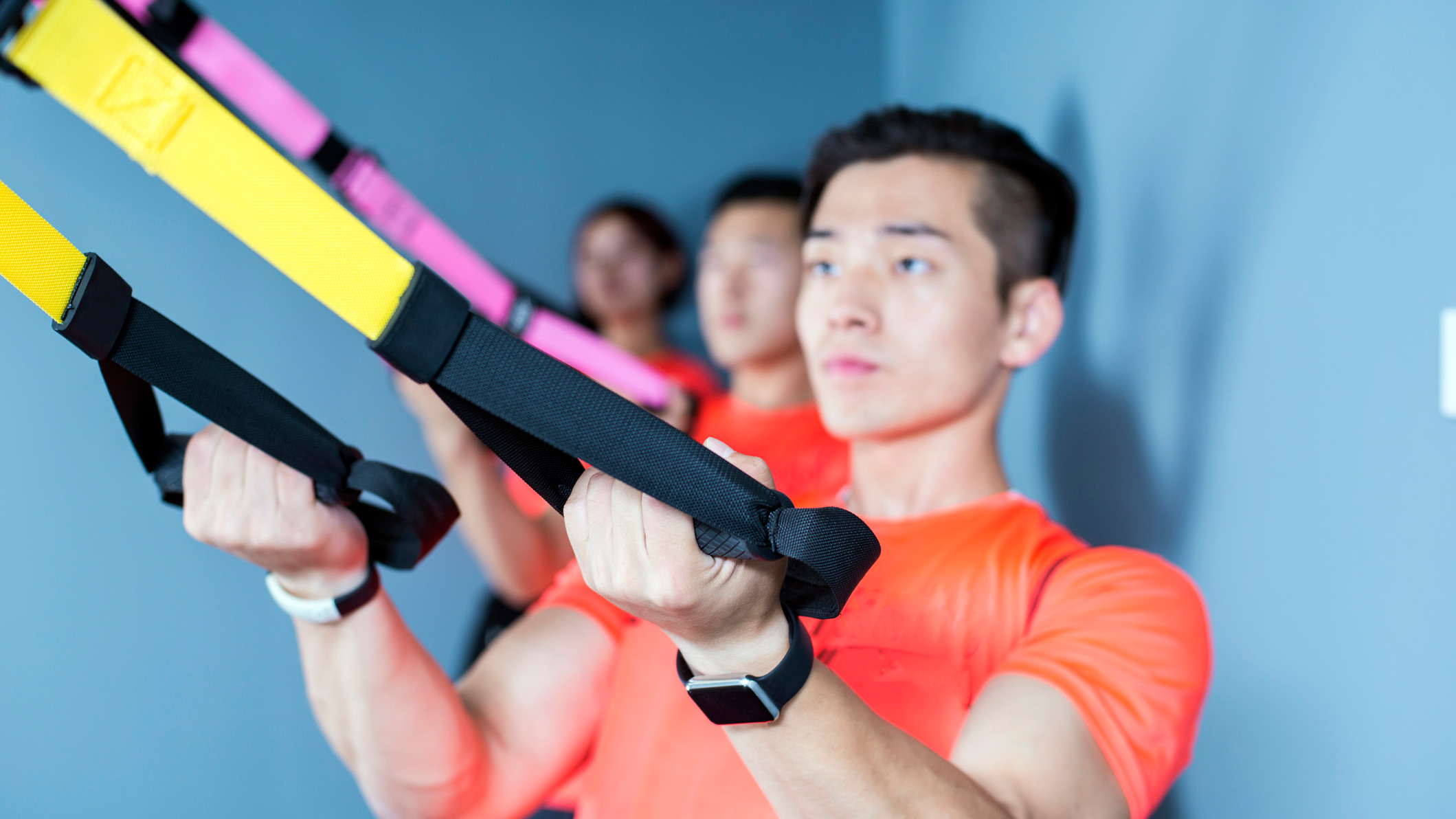Can't do pull-ups? Try doorway curls and inverted rows to build muscle first
If you're struggling to do one pull-up, try these easy moves to build muscle and work your way up to it


If one of your fitness goals is to do at least one pull-up, you might be wondering how to go about it. After all, if you can't do one pull-up, and you don't have a gym membership to practice on the lateral pulldown machine, how do you develop the muscles effectively?
As well as using the best adjustable dumbbells or best resistance bands to develop your back muscles with moves like the bent-over row, there are ways to use your own body weight to begin learning how to do pull-ups. You don't even need any equipment to get started.
One way to begin building your back, bicep and grip strength is by wall pulls, or doorway curls. Standing with your feet against a pole or a doorway, you lean back and pull your body towards the surface you're gripping. If you're just beginning your fitness journey, you can begin to use these doorway curls to develop muscles in your back and biceps. This video explains more:
How to do a doorway curl
One of the most popular pieces of home workout equipment are suspension trainers, like the TRX Home2: fabric straps with handles that can be attached to a handy tree, overhead bar or even the back of a door in a pinch.
Part of our list of the best workout equipment for home, the suspension trainer is excellent for performing the inverted row, an exercise that allows you to lean further back than the doorway curl for a more challenging variation of the same movement. Check it out in the video below:
How to do an inverted row
Think you're almost ready to try a pull-up? Now you've got your suspension trainer, there's one more variation to try: the jack-knife pull-up. Place your heels on the ground, or an elevated surface such as a chair, and use the suspension trainer to execute an assisted pull-up.
Below, you can see Hampton from YouTube channel HybridCalisthenics running through all three of these variations, including the jack-knife pull-up, before moving on to more advanced variations of a complete pull-up.
Start your week with achievable workout ideas, health tips and wellbeing advice in your inbox.
How to progress to a pull-up
According to research, pull-ups work your biceps, lats, and your rectus abdominis – better known as your "six-pack" muscles. In order to keep your body rigid during the pull-ups, you work your core, while your back and arm muscles pull your body weight up. In order to build up to a pull-up, it's great to look for exercises that hit these same muscle groups.
Of course, another way to train pull-ups is by doing assisted pull-ups, using resistance bands or an assisted pull-up machine in the gym to take some of your body weight, allowing you to perform the same movement while lifting less.
If you're training your pulling muscles, you should also be training your pushing muscles too to prevent imbalances, with moves such as the bench press and the push-up. Finally, you should also fuel muscle growth effectively with lots of protein: check out our best protein powder for weight loss guide for more on this.
Matt Evans is an experienced health and fitness journalist and is currently Fitness and Wellbeing Editor at TechRadar, covering all things exercise and nutrition on Fit&Well's tech-focused sister site. Matt originally discovered exercise through martial arts: he holds a black belt in Karate and remains a keen runner, gym-goer, and infrequent yogi. His top fitness tip? Stretch.
